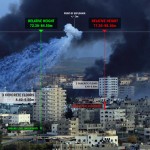 The very nature of war crimes makes them amongst the gravest crimes possible to commit. They tend to fall into one of three camps:
The very nature of war crimes makes them amongst the gravest crimes possible to commit. They tend to fall into one of three camps:
- Crimes against peace – which generally involves planning and initiating a war of aggression
- War crimes – which includes things such as the misuse of the civilian population of any occupied territory, offences against the laws of war, and the mistreatment or murder of prisoners of war.
- Crimes against humanity – which include atrocities committed against any civilian population before or during the war
Such cases are defined by the Geneva Convention, but the very nature of the crimes can make them difficult to prove. The United Nations require extremely accurate proof when they investigate potential war crimes, but gaining this degree of certainty can be challenging.
Now, a team from Goldsmith’s University are turning to the crowd to help build a case.
They have developed a platform, called Forensic Architecture, which allows people to upload multimedia from their smartphones as evidence in a war crime case.
The aim is to create an accurate, 3D rendered map of a location to allow the investigators to visibly determine whether explosives were used, and if so, how.
For instance, smoke plumes from explosions could be analyzed to gain insight into the nature of the explosion.
The university spin out has been developed specifically to explore potential war crimes, but the methodology they have developed could be equally applicable in other use cases where satellite data is not available.
Forest fire investigations for instance, or instances of crowd violence. This latter case could potentially build on the work of researchers at the University of Central Florida. They have developed automated means to accurately calculate the number of people in a crowd much faster than traditional methods.
It’s a fascinating approach, and you can learn more about it via the video below.